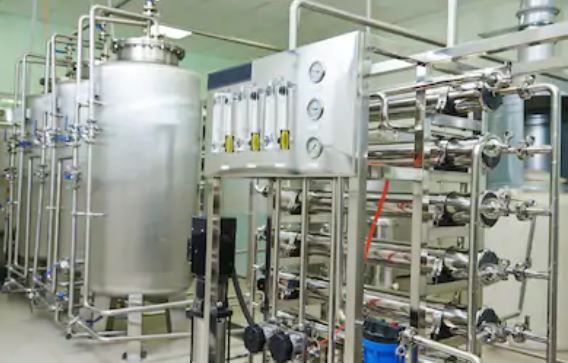 The new updated technologies we have today for water desalination are the results of endless studies and research put into finding new ways to purify water. Tests, experiments, and studies have helped in providing clean water to solve the water crisis that the world is facing. There are many countries that are suffering from water scarcity.
The new updated technologies we have today for water desalination are the results of endless studies and research put into finding new ways to purify water. Tests, experiments, and studies have helped in providing clean water to solve the water crisis that the world is facing. There are many countries that are suffering from water scarcity.
Water desalination and purification is the answer to face this crisis. Desalination is the process of removing salts by turning feed water into clean water. Saline water sources such as seawater, wells, and brackish water can reach up to 300,000 ppm and could be used for creating fresh water.
There are different methods of water desalination; some are considered to be more traditional with older techniques such as distillation which mimics the natural water cycles. Other methods that are more up-to-date can be divided into two categories: membrane-based methods such as reverse osmosis (RO), and electrodialysis membrane; and thermal-based methods such as multi-stage flash distillation and multiple-effect distillation. But what is RO, and how does it work?
What Is It?
In order to understand this water treatment process, one must first understand the naturally occurring process of osmosis. Osmosis is one of the most important phenomena that occurs in nature. It’s the process of the weaker saline solutions migrating to stronger solutions. To test this, you can fill a container of water with a weaker concentration of salt, and fill another with water that has a higher salt concentration, while separating both of them with a membrane.
You will find that the water with lower salt concentration will start migrating to the other tank. Reverse osmosis is the opposite of this process. Osmosis usually occurs without any sort of energy, yet, in order to reverse it, you will need to apply energy to the stronger saline solution. That’s why there is pressure applied to overcome the natural occurring osmosis to de-ionize water. In reverse osmosis, a semipermeable membrane is used to allow the water molecules to pass without any dissolved salts, impurities, or any contaminants.
How Does It Work?
The pressure that is applied is higher than the osmotic pressure of reverse osmosis. This requires a high-pressure pump to be the side with higher salt concentration, in order to force the water into migrating through the membrane. However, the pressure varies depending on the salt concentration in the water. The higher the salt level, the higher the pressure it needs to be able to force the water through the semipermeable membrane.
Salts and other contaminants are not allowed to pass through the membrane, thus they are rejected through the reject stream (or the brine stream) of the drain. Sometimes, if the feedwater doesn’t have a high ppm, the brine might be recycled back through the RO system to save water. The water from this process can reach purity that is up to 99% clean. Sometimes, the water’s pH level needs to be neutralized by a chemical feed pump to make it suitable for drinking.
 New Technologies in RO Water Treatment
New Technologies in RO Water Treatment
Reverse osmosis filtration isn’t only limited to engineers who are trying to solve the water crisis; thanks to technology, every household nowadays, can make use of this technology to purify their tap water from contaminants and bacteria. This solution can improve the taste, odor, and the quality of the water you are drinking at home without having to buy mineral water bottles every month.
If you visit Best-RO-System.com, you will find that the filters available for purchase have different stages of purifying water. There are 3, 4, or even 5-stage filtration systems. And of course, the higher the number of stages that the filter has, the better. These are the most common filters used.
- Sediment Pre-filter: This stage is used for getting rid of the large particles of debris or dirt.
- Carbon Pre-filter: This filter stage gets rids of heavy metals, chlorine, and any other contaminants, while improving the taste of water.
- A Second Carbon Stage: This one is for any remaining contaminants that the second stage missed.
- RO Membrane: The membrane can purify water, and reject up to 99% of impurities.
- Carbon Post-filter: This one is more for the taste, odor, and appearance of water to finish the whole process and leave a fresh taste.
RO filtration systems are commonly used in most houses around the world to guarantee the cleanliness of tap water. These filters are important for the environment, as much as they are important for people, to purify more water, and to limit the use of plastic by minimizing the number of mineral water bottles people purchase.
__________________________________________________
Interesting related article: “Developing a graphene water filtration system.”

